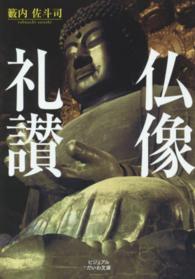Full Description
We live in a socio-cultural reality which is dominated by an entrepreneurial and instrumental rationality, as well as by a discriminative and populist mentality. Questioning the validity of taken-for-granted sovereign perspectives is thus of vital importance. Our contact with art can serve as a pathway through which we might be empowered to identify false life values and develop the disposition and ability to challenge them.
The learning potential of aesthetic experience is, however, barely exploited within educational systems. In addition, although major scholars have contributed to a deeper understanding of the liberating dimension of processing important artworks, there has been surprisingly little discussion in the relevant literature focusing on educational practice.
Exploring Art for Perspective Transformation provides a comprehensive analysis and synthesis of theoretical views pertaining to the emancipatory process of exploring art. Moreover, it presents the educational method Transformative Learning through Aesthetic Experience (TLAE), with reference to particular examples of implementation. TLAE is addressed to adult educators and school teachers regardless of the subject they teach and their theoretical background on aesthetics. It involves engaging learners in exploring works from fine arts, literature, theatre, cinema and music with a view to promoting critical reflection on one's potentially problematic perspectives.
Contents
Preface
Acknowledgments
List of Figures and Tables
About the Author
Part 1: Theoretical Review
Introduction of Part 1
1 The Distinctive Nature of Learning for Change
1 Introduction
2 Assimilative and Accommodative Learning
3 What Form Is Transformed?
4 Transformation of the Identity
5 Single-Loop and Double-Loop Learning
6 Τhe Struggle for Hegemony
7 Banking and Problem-Posing Education
8 Critical Pedagogy
9 Transformation Theory
10 Transformative Learning Theoretical Field
11 Concluding Remarks
2 Cognitive Theory of Art
1 Introduction
2 Art and Growth of Mind
3 Ways of Employing Art
4 Cognitive School and Learning for Change
5 Final Thoughts
3 Aristotle's Poetics
1 Introduction
2 Mimesis and Learning
3 Defijining Tragedy
4 Interpretations of Catharsis
5 The Plot
6 "Like Ourselves"
7 The Function of Fear and Pity
8 Learning, Catharsis, Perspective Transformation
9 The Form of the Tragedy
10 Criticism to Entertaining Art
11 Final Thoughts
4 The Views of John Dewey and Maxine Greene
1 Introduction
2 Art as Experience
3 Final Thoughts
4 Releasing the Imagination
5 Final Thoughts
5 The Perspective of Frankfurt School
1 Introduction
2 The Critique of Culture Industry
3 A Case Study: Philadelphia
4 Art and Emancipation
5 A Widespread Discourse
6 Final Thoughts
6 The Legacy of Freire and Gramsci
1 Introduction
2 The Aesthetic Dimension in Freire's Work
3 Gramsci's Conception of Popular Art
4 Final Thoughts
7 Alternative Approaches
1 Introduction
2 Emancipatory Museum Education
3 Challenging Issues
4 Cultural Studies, Critical Literacy, Critical Pedagogy
5 Giroux's View on Popular Films
6 Using Entertainment Media
7 Discussion
Part 2: The Transformative Learning through Aesthetic Experience (tlae) Method
Introduction to Part 2
8 The Theoretical Foundations and Principles of the Method
1 Introduction
2 Aesthetic Experience Is an Important Component of Emancipatory Education
3 TLAE Is Associated with Learning for Change
4 Both Adolescents and Adults Can Be Involved
5 Meaningful Artworks are Addressed to a Wide Range of Learners
6 TLAE Is Potentially Connected with All the Subject Matters
7 TLAE Can Be Implemented by a Large Number of Educators
8 The Educators Function as "Cultural Activists"
9 Final Thoughts
9 The Stages of TLAE Method
1 Introduction
2 First Stage: Determining the Need for Transformative Learning
3 Second Stage: Participants Express Their Ideas
4 Third Stage: Constructing a Transformational Strategy
5 Fourth Stage: Identifying Works of Art and Educational Techniques
6 Fifth Stage: Exploring the Artworks and Critical Questions
7 Sixth Stage: Critically Reflecting on Assumptions
8 Seventh Stage: Defijining and Applying Next Steps
10 Examples of Implementation
1 First Example: Transforming Prisoners' Views
2 Second Example: Challenging Racism in Elementray School
3 Third Example: Transforming Student Teachers' Assumptions: A Long-Term Research
11 Inferences Drawn from Application
1 Introduction
2 Learners' Attitude toward TLAE
3 Can TLAE Contribute to Perspective Transformation?
4 The Educators' View on TLAE
5 Becoming Transformative Educators
6 Suggestions for the Implementation of TLAE
12 Concluding Reflections
Appendix 1: The Use of Films, Literature and Music
References
Name Index
Subject Index
Artworks Index








